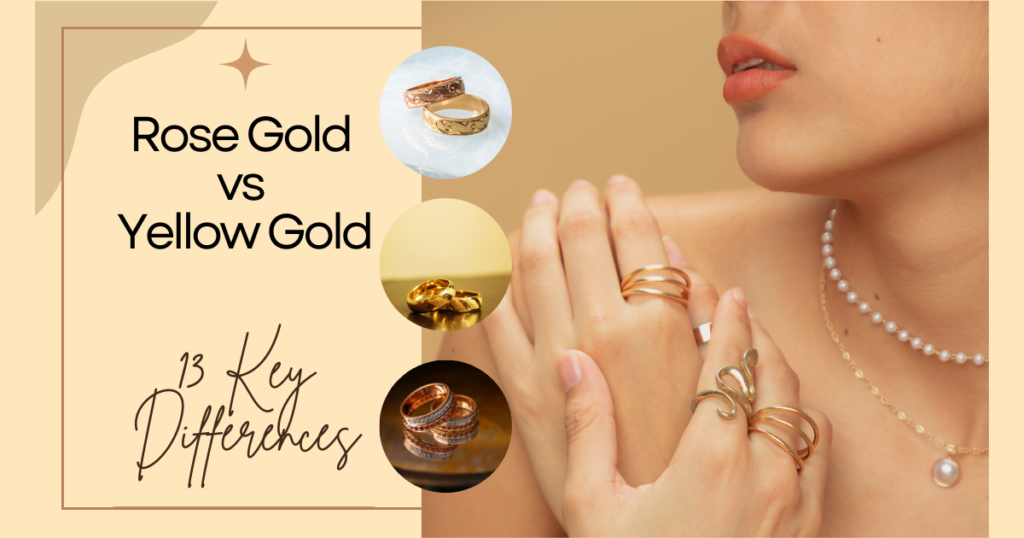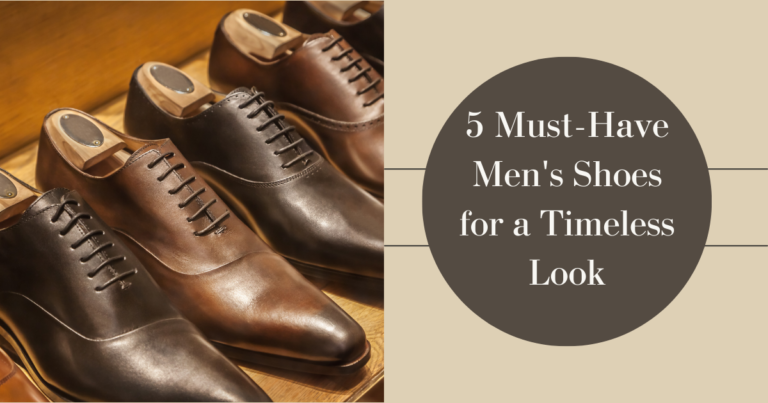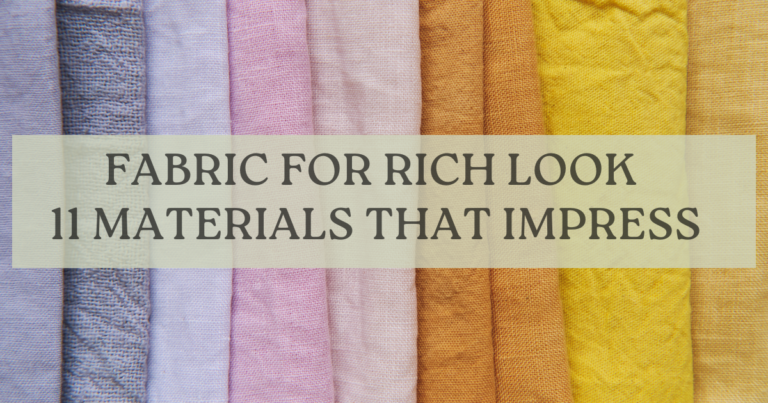Rose Gold vs Yellow Gold: 13 Key Differences

For centuries, gold has captivated hearts with its timeless beauty and inherent value. But the world of gold jewelry extends beyond the classic yellow hue.
Today, we delve into the captivating realm of rose gold and its counterpart, yellow gold, exploring their unique characteristics to help you make the perfect choice for your next treasured piece.
1. Color Composition: A Tale of Two Alloys
The fundamental difference lies in the metals alloyed with pure gold to create the desired color. Yellow gold, as its name suggests, boasts its natural golden hue thanks to minimal added metals. Rose gold, however, achieves its romantic pink blush through the addition of copper. The higher the copper content, the more pronounced the rosy pink shade becomes.
2. Karat Kings: Unveiling Strength and Purity
The karat (K) system denotes the purity of gold. 24K represents pure gold, but for jewelry, it’s often alloyed for durability. Both rose gold and yellow gold come in various karatages, with 18K, 14K, and 10K being the most common. Higher karatage signifies a higher percentage of pure gold, resulting in a softer, richer color but decreased durability. Lower karatage metals are more resilient but have a less vibrant color.
3. Skin Tone Symphony: Finding Your Perfect Match
When selecting between rose gold and yellow gold, a crucial factor is your skin tone. Rose gold, with its warm undertones, beautifully complements a wide range of skin tones, from fair to olive to deep. Its versatility makes it a popular choice for those who love adaptability. Yellow gold, on the other hand, shines brightest on warmer skin tones with olive or golden undertones. However, cooler skin tones can still find flattering yellow gold pieces in softer shades.
4. Tarnish Tales: The Fight Against Fading Beauty
Tarnish is a thin layer of corrosion that can form on the surface of metals. Thankfully, both rose gold and yellow gold are naturally tarnish-resistant. However, trace elements in the alloying metals can influence tarnish susceptibility. Some rose gold alloys may exhibit slight tarnishing over time, but it’s easily treatable with gentle cleaning methods.
5. Durability Duels: Strength in the Face of Everyday Wear
The addition of copper in rose gold makes it a generally more durable metal compared to yellow gold. Copper’s inherent strength adds resilience to the alloy, making rose gold a good choice for active individuals or jewelry that endures daily wear and tear.
6. Price Points: Unveiling the Value Spectrum
The price of rose gold and yellow gold can vary depending on several factors, including karatage, weight, and design complexity. Generally, the price difference is negligible. However, the need for rhodium plating in white gold (often paired with white diamonds) can add to the cost compared to rose gold or yellow gold pieces.
7. Design Duos: A Match Made in Jewelry Heaven
Both rose gold and yellow gold pair beautifully with a variety of gemstones and design styles. Rose gold’s soft glow complements pink, peach, and morganite gemstones, while also adding a modern touch to classic diamonds. Yellow gold, on the other hand, enhances the brilliance of colorless diamonds and gemstones with warm hues like sapphires and citrines.
8. Vintage Vibes vs. Modern Muse: A Timeless Journey
Yellow gold boasts a timeless elegance that has graced jewelry for centuries. Its traditional charm makes it ideal for vintage-inspired pieces and classic solitaire rings. Rose gold, on the other hand, exudes a contemporary flair. Its trendy appeal makes it perfect for modern and minimalist designs.
9. Symbolism Secrets: Unveiling the Stories Untold
Throughout history, both rose gold and yellow gold have held symbolic meanings. Yellow gold is often associated with wealth, luxury, and enduring love. Rose gold, with its delicate pink hue, can symbolize love, romance, and femininity.
10. Maintenance Matters: Caring for Your Golden Treasures
To maintain the brilliance of both rose gold and yellow gold, regular cleaning is essential. Use a gentle jewelry cleaner and a soft polishing cloth to remove dirt and grime. Avoid harsh chemicals and abrasive cleaners that can damage the metal.
11. The Resale Reality: Considering the Future
The resale value of both rose gold and yellow gold depends on current market trends and the specific piece’s design and condition. Since yellow gold has a longer established history, it might have a slightly more stable resale market. However, rose gold’s popularity continues to rise, making its future value an interesting prospect.
12. The Sustainability Spotlight: Ethical Choices Matter
When considering both metals, look for reputable jewelers who source their gold ethically and sustainably. This ensures responsible mining practices that minimize environmental and social impact.
13. The Ultimate Choice: A Celebration of You
Ultimately, the best choice between rose gold and yellow gold boils down to personal preference. Consider your individual style, skin tone, and the occasion for which the jewelry is intended. Don’t be afraid to experiment! You can even mix and match rose gold and yellow gold pieces for a unique and personalized look.
In Conclusion
Both rose gold and yellow gold offer timeless beauty and enduring value. By understanding their key differences, you can make an informed decision that perfectly complements your style and personality. So, embrace the allure of gold, in all its radiant hues, and celebrate your unique expression with the perfect piece.







